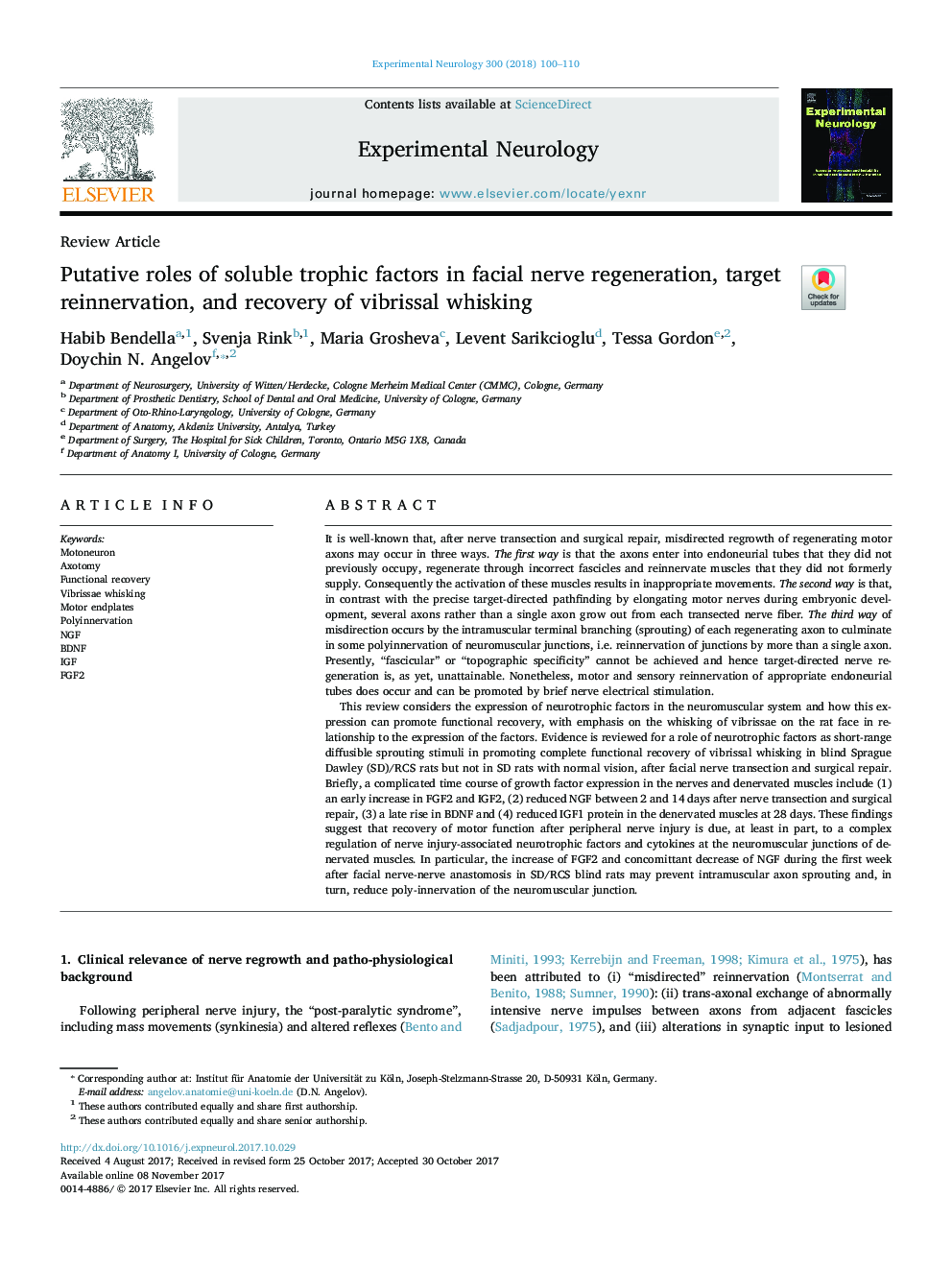| Article ID | Journal | Published Year | Pages | File Type |
|---|---|---|---|---|
| 8684718 | Experimental Neurology | 2018 | 11 Pages |
Abstract
This review considers the expression of neurotrophic factors in the neuromuscular system and how this expression can promote functional recovery, with emphasis on the whisking of vibrissae on the rat face in relationship to the expression of the factors. Evidence is reviewed for a role of neurotrophic factors as short-range diffusible sprouting stimuli in promoting complete functional recovery of vibrissal whisking in blind Sprague Dawley (SD)/RCS rats but not in SD rats with normal vision, after facial nerve transection and surgical repair. Briefly, a complicated time course of growth factor expression in the nerves and denervated muscles include (1) an early increase in FGF2 and IGF2, (2) reduced NGF between 2 and 14Â days after nerve transection and surgical repair, (3) a late rise in BDNF and (4) reduced IGF1 protein in the denervated muscles at 28Â days. These findings suggest that recovery of motor function after peripheral nerve injury is due, at least in part, to a complex regulation of nerve injury-associated neurotrophic factors and cytokines at the neuromuscular junctions of denervated muscles. In particular, the increase of FGF2 and concomittant decrease of NGF during the first week after facial nerve-nerve anastomosis in SD/RCS blind rats may prevent intramuscular axon sprouting and, in turn, reduce poly-innervation of the neuromuscular junction.
Related Topics
Life Sciences
Neuroscience
Neurology
Authors
Habib Bendella, Svenja Rink, Maria Grosheva, Levent Sarikcioglu, Tessa Gordon, Doychin N. Angelov,
